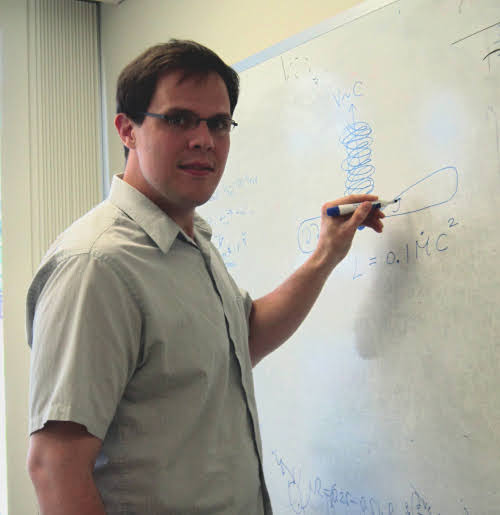
When astrophysicist Brian Metzger looks at the origins of black holes, all he sees is gold. It’s a perspective that has been years in the making.
As a NASA Einstein Fellow at Princeton University in 2010, Metzger theorized that gold, along with other heavy and precious metals, was created during a collision of two merging neutron stars and that this process would create a luminous flare of emission known as a “kilonova” right before the merged stars collapse into a black hole.
In 2017, this prediction was proven true after LIGO detectors, large-scale observatories located in the states of Louisiana and Washington, pointed astronomers to a kilonova explosion that revealed evidence of heavy elements like gold.
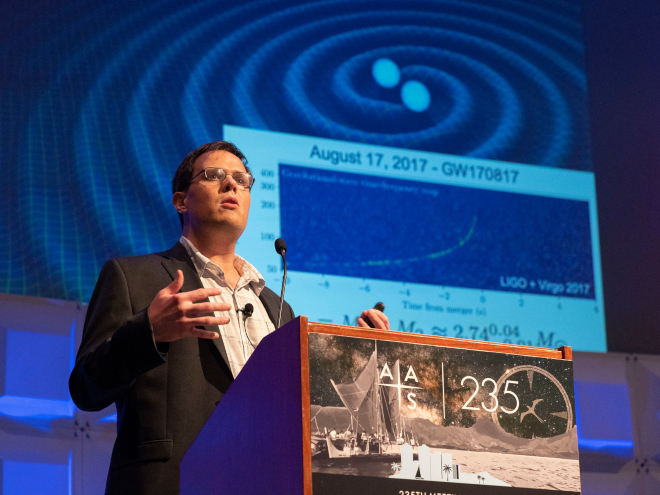
Brian Metzger, recipient of the American Astronomical Society’s HEAD Bruno Rossi Prize, gives a plenary lecture at the society’s 235th meeting at the Hawai’i Convention Center
Metzger’s correct predictions about these long-standing questions in astrophysics that had eluded scientists for years—including how gold was made—propelled him to be named the 2020 Blavatnik National Awards for Young Scientists Laureate in Physical Sciences & Engineering.
The Blavatnik Family Foundation and the New York Academy of Sciences announced all three 2020 Laureates in July. Metzger, 39, a physics professor at Columbia University in New York, was also a Blavatnik National Awards Finalist in previous years, 2018 and 2019.
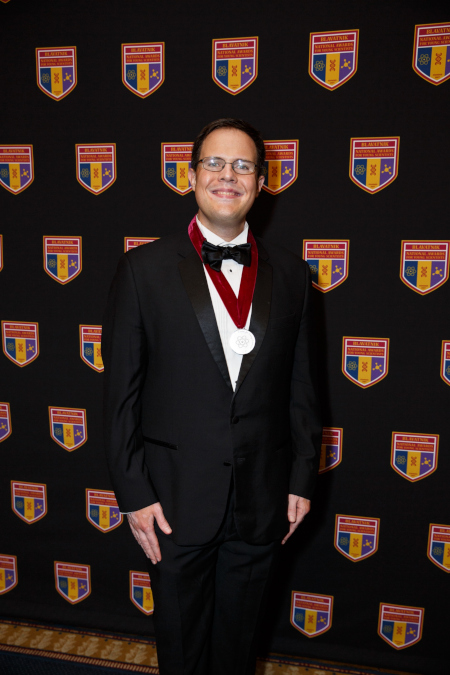
Brian Metzger was honored as a Finalist at the 2019 Blavatnik National Awards
Ceremony at the American Museum of Natural History in New York City
Metzger said important discoveries in his field – and answers to everyday, fundamental science questions – are becoming close in reach, thanks in part to advanced LIGO detectors, which can measure cataclysmic gravitational wave events, and other astronomical tools (satellites).
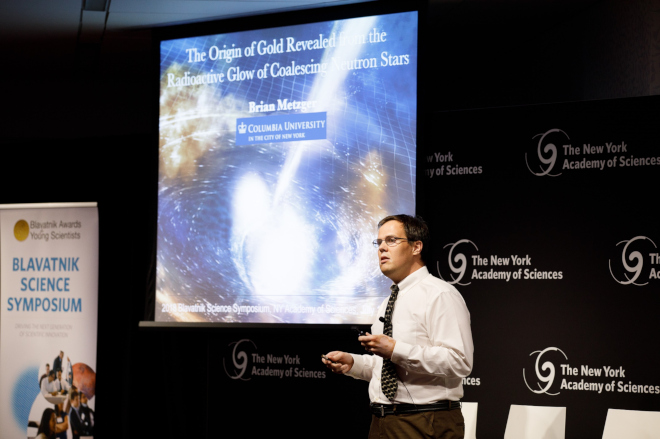
Brian Metzger speaking at the 2018 Blavatnik Science Symposium at the New York Academy of Sciences
Before Metzger’s research, he said, “we didn't know where these elements came from, and now we think a very large fraction of them do come from these merging neutron star systems.”
Closer to home, “it’s an incredible realization that the precious metals in my wedding band were likely forged in the vicinity of a black hole,” he said.
Growing up in Burlington, Iowa, the hometown of many famous scientists, Metzger had a local connection to science. He was amazed by Dr. James Van Adams, who discovered the Van Allen radiation belts, and Dr. Edward Jones, the principal investigator of the Voyager missions, which flew to the outer solar system and took up-close pictures of the planets.
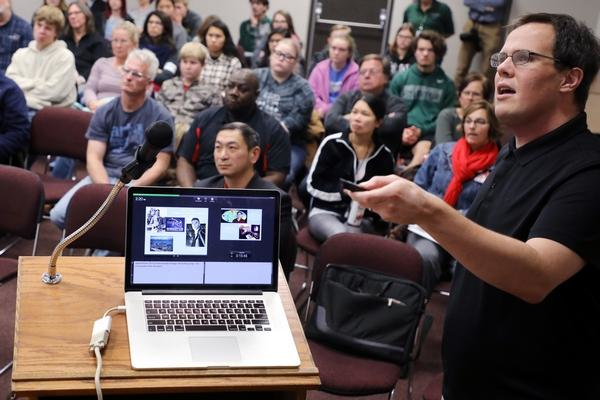
Brian Metzger giving a public lecture in his hometown of Burlington, Iowa
"I remember looking at images from Voyager, of the planets, and really wondering what were these exotic alien worlds?" he said.
Metzger also credits his science background to his mom, an art teacher who turned to science when her school's art program was cut. He remembers turning the pages of his mom's astronomy textbooks and being fascinated. Seeing his mom blend her creativity with science taught him that science is nothing but "constrained creativity"—creativity with rules.
At Columbia, Metzger said he’s motivated by working with his students and colleagues who come from diverse backgrounds. He said their strengths and expertise not only compliment his own, but also span wider than what he can offer.
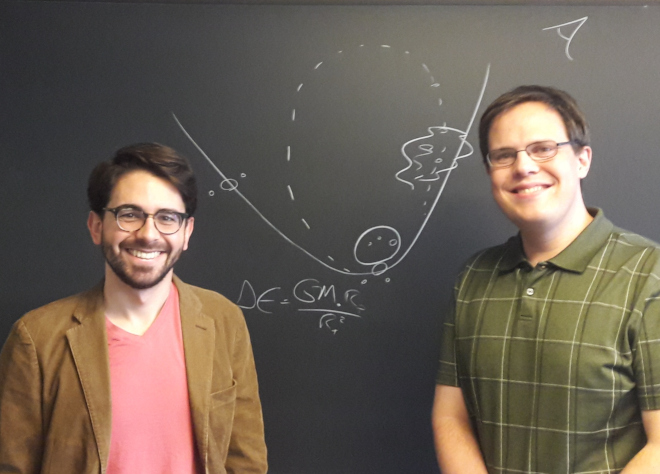
Brian Metzger with his postdoctoral fellow, Nicholas Stone
Metzger said he’s long followed advice from his doctorate adviser: Be yourself and play to your strengths.
That guidance has proven to be gold, no pun intended. That’s because, Metzger said, you should look to “find the collaborator who makes up for your weaknesses or complements you”—a combination that can help solve the universe’s biggest mysteries.